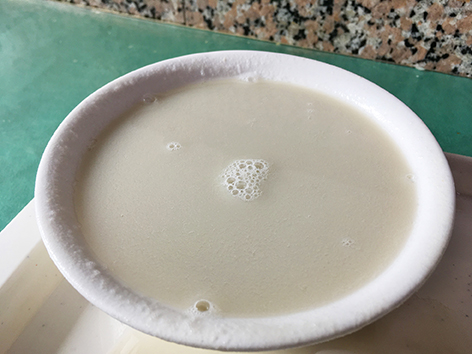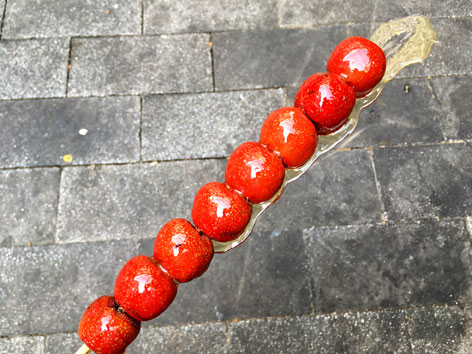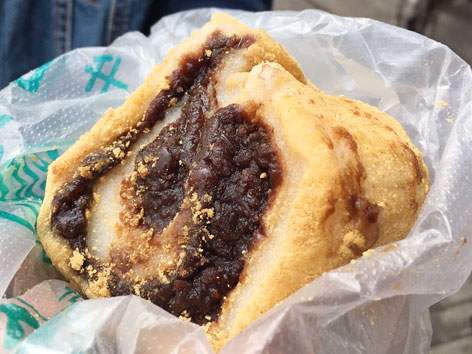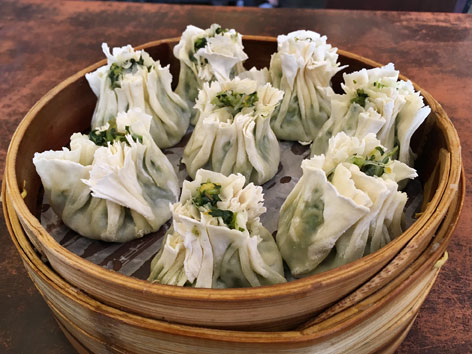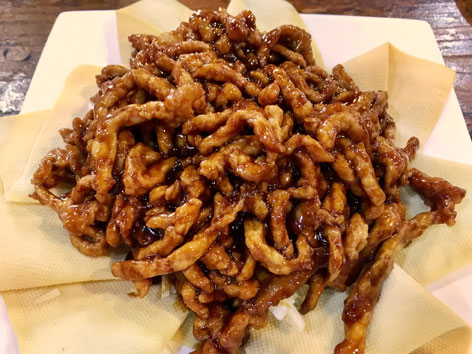What: Be careful when ordering a bowl of douzhi … there’s a lot riding on it. The ability to enjoy this fermented mung-bean drink is the mark of a true Beijinger, while an inability to finish your bowl is an obvious sign that you’re not from around here. As you may guess, douzhi is definitely an acquired taste. It has a sharp tangy flavor and a smell that some (i.e., most) people would describe as off-putting, to say the least. Douzhi can be enjoyed as a refreshment any time of day, but it’s typically consumed in the morning. It’s usually accompanied by a small dish of pickled vegetables 酸菜) and jiao quan (焦圈)–crispy, deep-fried rings of hollow batter, like onion rings without the onions. And don’t embarrass yourself by asking for a spoon; just follow the locals and slurp right from the bowl.
Good to know: Douzhi has always enjoyed a wide popularity in Beijing, from emperors to beggars. In the Qing dynasty (1644-1911), it was one of the few foods that a nobleman or officer could stop to enjoy at a humble street-side stall without dishonoring himself in the eyes of his peers or inviting snickers from passersby.
Where: We got our douzhi from Huguosi Xiaochi (护国寺小吃, 214 Dongsi Bei Dajie 东四北大街214号, map), which is also one of our favorite breakfast joints and purveyors of Beijing baked goods.
When: Daily, 6am-9pm
Order: A steaming hot bowl of douzhi costs 2 RMB, with a pair of jiao quan for 1.5 RMB–the pickled veggies come along for free. It’s not bad to our (non-native) taste buds: We find the flavor reminiscent of a pungent French cheese, with just a hint of olives. But maybe we’re being generous.
Once you’ve experienced douzhi, you might be in the mood for something sweet–we recommend the tang huoshao (2 RMB).
Alternatively: Douzhi is also available at Bai Kui (白魁, 158 Jiaodaokou Nan Dajie, 交道口南大街158号, map), and for those who’d like to enjoy the beverage in the comfort of their own home, you can buy it in dangerously ballooning plastic bags from Bao Ji (宝记, 27 Niu Jie Shuru Hutong, 牛街输入胡同27号, map).

